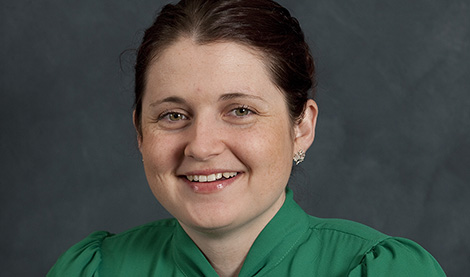

Blog

New year, new normal?
Monday March 15, 2021
As 2020 drew to a close, I think we were all hoping that the year ahead would mark a return to something closer to ‘normal’ – after all the past 12 months had been an anomaly, a period of time about which we’d no doubt tell stories later.
Yet here we are, not far into 2021, and there’s no sign of normalcy returning. Mutant COVID strains are wreaking havoc across the world and daily infection/death rates that had us gasping last year, have already been exceeded on multiple continents. Field hospitals and anxiety-provoking stories from burnt-out colleagues in the US and UK are once again dominating our social media feeds that were not so long ago filled with discussions about wellbeing and medical education.
Here in Australia, infection control teams are battling with the new strains threatening to break free from quarantine, with border controls and endlessly changing rules giving emotional whiplash to those trying to reconnect with family and friends.
Closer to home, we have been through lockdown following nine months with no COVID transmission in the community. As we anxiously watch the unfolding developments, let us also not forget that Western Australian hospitals are at capacity and buckling under extreme ramping pressure on emergency departments.
As our new interns hit the wards and with another annual RMO/registrar changeover, it’s hard to be optimistic that 2021 will be a better year for DiTs in WA – certainly not without some proactive system-wide planning and support.
Leave – scarce in 2020 – will be even more of a challenge in 2021. The postponement and cancellation of multiple courses and exams will see significantly increased demand on professional development leave (PDL), as well as a massive ongoing backlog of annual leave.
With an overloaded UK system and no hint of border restrictions easing, it looks like another year with no relief from British JMOs for WA’s overstretched system.
Lack of leave relief will force departments to provide ‘internal cover’, making things worse as many of us would rather postpone our leave than place our colleagues under any more strain. Every one of us has examples of doing something a bit dangerous – working every day for more than a month, exceeding the safe number of consecutive nights etc. – to cover for a genuinely sick colleague or someone sitting their exams.
So, is it time for a rethink about leave cover in our public hospitals? It is cheaper to pay a JMO to cover annual leave as a junior than it is to pay out accrued leave balances for every doctor when they leave WA Health, often with large leave liabilities (given they have been denied access to leave throughout their employment).
Should we be calling for realistic leave relief pools? With four weeks of annual leave and on average, two weeks of professional development leave per person, you would need a leave reliever for almost every nine full-time employees. Should we be building this kind of staffing into our hospital accreditation for JMOs and trainees?
Amid ongoing debate about the safety of varying forms of PPE in the workplace, should we declare a certain level of leave liability as high risk for burnout and medical error, and would this trigger a rethink about service provision for staff fatigue levels?
More and more DiTs are leaving clinical medicine altogether as these systemwide problems, already a concern in pre-COVID times, are compounded now.
To keep our workforce healthy – for staff and patients – and to continue to provide the high-quality services people expect from the WA health system, we must be proactive. While 2021 hasn’t brought the fresh start some of us may have been hoping for, it does provide an opportunity to really examine the root causes of some of our systemic problems and advocate for innovative and long-term solutions.

